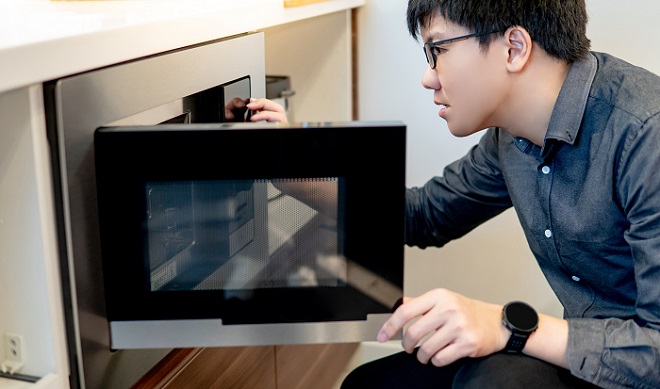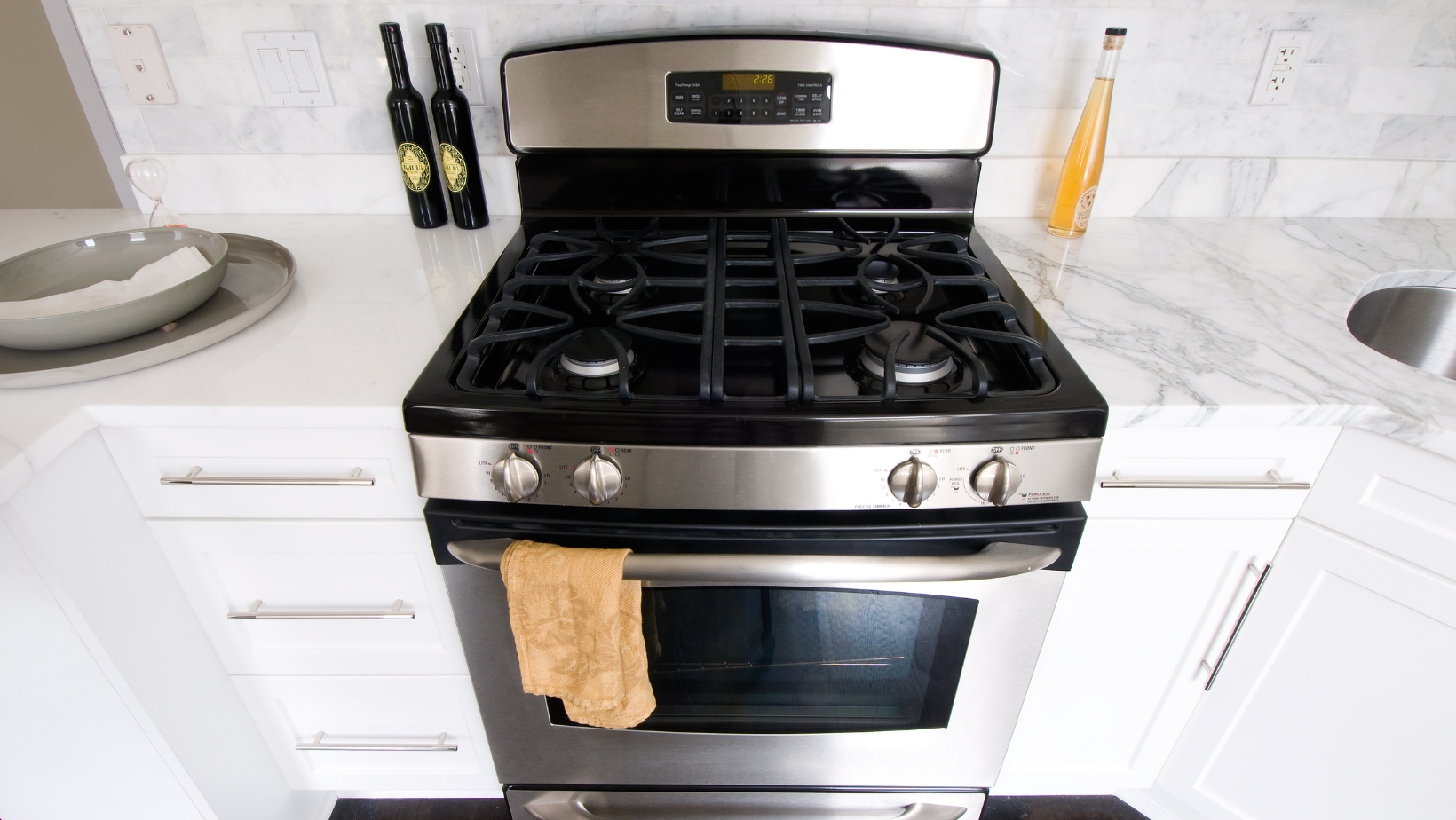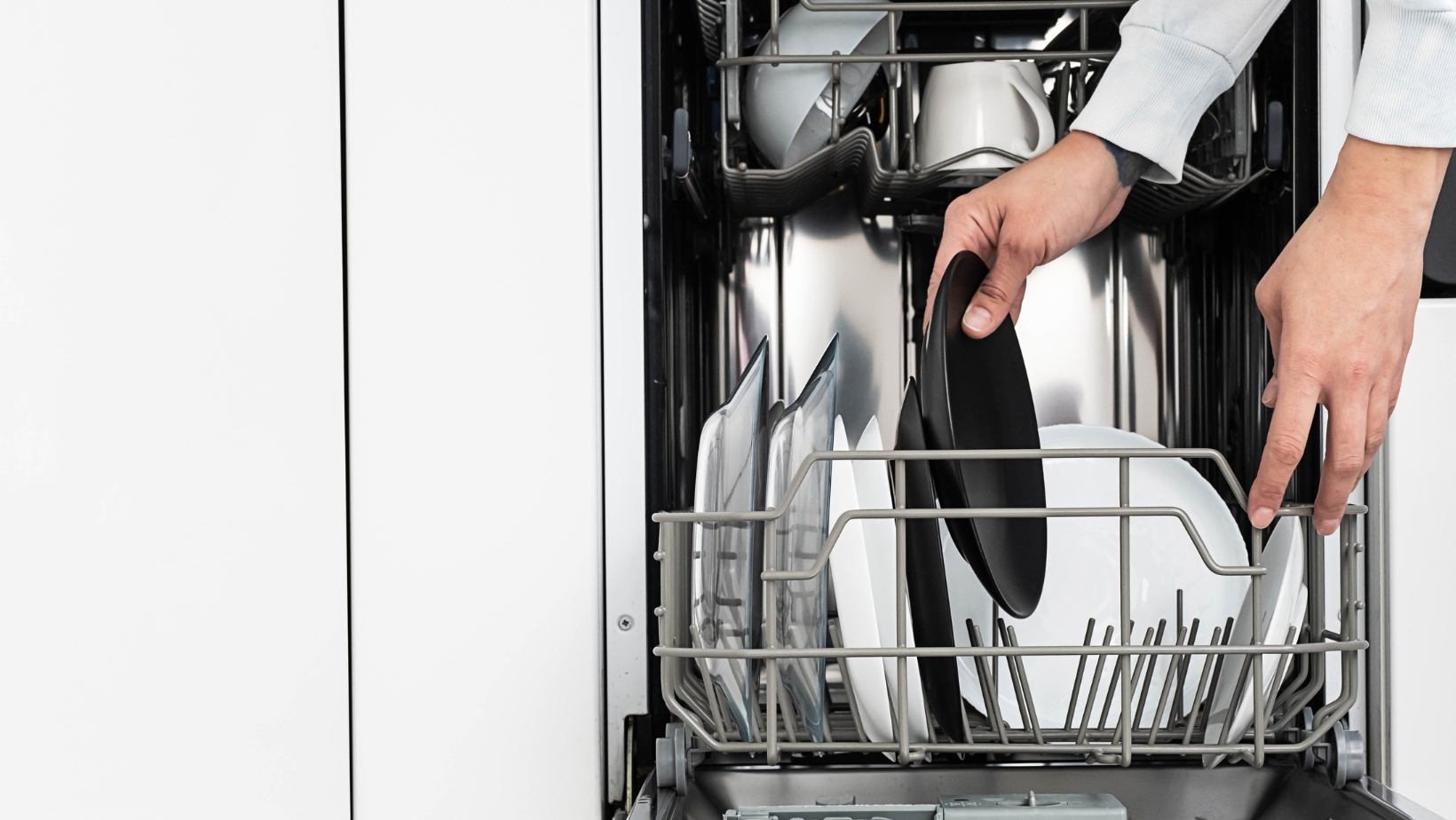Figuring out why the tray inside your microwave won’t spin isn’t always easy. Sure, it could be that someone messed with the settings and turned the rotation off.
If you check the settings and that’s not the issue, then one of these problems could be preventing microwave plate rotation:
- Misalignment or obstruction.
- Worn turntable coupler.
- Turntable motor failure.
- Wiring failure.
- Electronic control board malfunction.
Here are some expert tips for finding out why your microwave plate won’t rotate.
Check the Alignment and Look for Obstructions
Pull the microwave plate out and check underneath it. You may find something obstructing the turntable’s movement or preventing it from sitting properly on its support ring or drive coupler. Remove any debris or foreign objects you find under the microwave plate or the support ring.
Replace the microwave plate if you find that it’s damaged.
Check the alignment of the microwave turntable tray. Insert the turntable and make sure it is properly seated on the support. Reposition the turntable if necessary. Aligning the microwave plate properly may allow it to rotate properly.
Replace the Microwave Turntable Coupler if it’s Worn or Damaged
The turntable motor coupler is a key component in driving microwave plate rotation. This part, which connects the turntable to the motor, may be damaged or worn out.
Inspect the coupler for any visible damage. If it’s cracked or broken, it replace it. Make sure to use the appropriate replacement part specified by the microwave’s manufacturer. You can look up the right part and order the replacement motor coupler on our Goose Fix PartsDirect website.
Fix a Microwave Turntable Motor Failure
When you’ve eliminated the above issues as a cause for turntable rotation failure, a failed turntable motor may be the problem.
Although many microwave repairs should only be performed by a service technician because of the inherent dangers of servicing this appliance, you may be able to safely access and replace the turntable motor in many models.
Follow the steps in the owner’s manual for your microwave if it shows how to replace the microwave motor.
Here’s a general description of the repair process for common microwaves and microhoods:
- Unplug the microwave to disconnect electrical power.
- Remove the microwave plate, support ring and the turntable motor coupler from the inside of the microwave.
- Remove the mounting screws from the bottom panel of the microwave and pull the panel off or hinge it down to access the turntable motor.
- Disconnect the wires from the turntable motor.
- Remove the mounting screws and pull the old turntable motor out.
- Install the new turntable motor and secure it with the mounting screws.
- Connect the wires to the new turntable motor.
- Reinstall the bottom microwave panel and secure it with the mounting screws.
- Reinstall the motor coupler, support ring and microwave plate.
- Plug the microwave power cord back into the electrical outlet to restore power.
If the microwave plate still won’t rotate after replacing the turntable motor, a wiring failure or malfunctioning electronic control board could be causing the problem.
Have a service technician diagnose and repair these types of microwave problems.
Why Repairing a Microwave on Your Own is Dangerous
Microwave ovens use high voltage components such as capacitors that retain a lethal electrical charge even when the power cord is unplugged. This makes it particularly hazardous for you to remove the outer cabinet cover and touch internal electrical parts.
After servicing a microwave, a service technician using a survey meter to test the microwave for radiation leakage. Fixing the microwave on your own and using it without checking for radiation leakage can expose you to hazardous radiation. Repairs like replacing the door handle or fixing a door hinge that involve disassembly of the microwave door need to be completed by a service technician so proper testing for radiation leakage can be completed after the repair.
To avoid health risks and serious injury, we recommend that you always have a service technician complete microwave repairs that involve accessing internal components.

Figuring out why the tray inside your microwave won’t spin isn’t always easy. Sure, it could be that someone messed with the settings and turned the rotation off.
If you check the settings and that’s not the issue, then one of these problems could be preventing microwave plate rotation:
- Misalignment or obstruction.
- Worn turntable coupler.
- Turntable motor failure.
- Wiring failure.
- Electronic control board malfunction.
Here are some expert tips for finding out why your microwave plate won’t rotate.
Check the Alignment and Look for Obstructions
Pull the microwave plate out and check underneath it. You may find something obstructing the turntable’s movement or preventing it from sitting properly on its support ring or drive coupler. Remove any debris or foreign objects you find under the microwave plate or the support ring.
Replace the microwave plate if you find that it’s damaged.
Check the alignment of the microwave turntable tray. Insert the turntable and make sure it is properly seated on the support. Reposition the turntable if necessary. Aligning the microwave plate properly may allow it to rotate properly.
Replace the Microwave Turntable Coupler if it’s Worn or Damaged
The turntable motor coupler is a key component in driving microwave plate rotation. This part, which connects the turntable to the motor, may be damaged or worn out.
Inspect the coupler for any visible damage. If it’s cracked or broken, it replace it. Make sure to use the appropriate replacement part specified by the microwave’s manufacturer. You can look up the right part and order the replacement motor coupler on our Goose Fix PartsDirect website.

Fix a Microwave Turntable Motor Failure
When you’ve eliminated the above issues as a cause for turntable rotation failure, a failed turntable motor may be the problem.
Although many microwave repairs should only be performed by a service technician because of the inherent dangers of servicing this appliance, you may be able to safely access and replace the turntable motor in many models.
Follow the steps in the owner’s manual for your microwave if it shows how to replace the microwave motor.
Here’s a general description of the repair process for common microwaves and microhoods:
- Unplug the microwave to disconnect electrical power.
- Remove the microwave plate, support ring and the turntable motor coupler from the inside of the microwave.
- Remove the mounting screws from the bottom panel of the microwave and pull the panel off or hinge it down to access the turntable motor.
- Disconnect the wires from the turntable motor.
- Remove the mounting screws and pull the old turntable motor out.
- Install the new turntable motor and secure it with the mounting screws.
- Connect the wires to the new turntable motor.
- Reinstall the bottom microwave panel and secure it with the mounting screws.
- Reinstall the motor coupler, support ring and microwave plate.
- Plug the microwave power cord back into the electrical outlet to restore power.
If the microwave plate still won’t rotate after replacing the turntable motor, a wiring failure or malfunctioning electronic control board could be causing the problem.
Have a service technician diagnose and repair these types of microwave problems.
Why Repairing a Microwave on Your Own is Dangerous
Microwave ovens use high voltage components such as capacitors that retain a lethal electrical charge even when the power cord is unplugged. This makes it particularly hazardous for you to remove the outer cabinet cover and touch internal electrical parts.
After servicing a microwave, a service technician using a survey meter to test the microwave for radiation leakage. Fixing the microwave on your own and using it without checking for radiation leakage can expose you to hazardous radiation. Repairs like replacing the door handle or fixing a door hinge that involve disassembly of the microwave door need to be completed by a service technician so proper testing for radiation leakage can be completed after the repair.
To avoid health risks and serious injury, we recommend that you always have a service technician complete microwave repairs that involve accessing internal components.
Do you need to have your microwave repaired?
Schedule a service appointment now.

When to Replace a Microwave Rather Than Repairing It
Replacement microwaves are often inexpensive. A microwave repair will often cost $250 or more. When you’re facing a significant microwave repair, you’re often better off replacing the appliance rather than repairing.
In situations where you have a built-in microwave that matches other appliances and a replacement model is expensive or unavailable, then you may have no choice other than scheduling a repair.
When you need to have your microwave repaired, trust Goose Fix Home Services to complete the repair. We have the parts and expertise to repair microwave brands such as Whirlpool, Frigidaire, KitchenAid, Jenn-Air, Dacor, Kenmore and more. We’ll repair your microwave no matter where you bought it.
With more than 7 million repairs performed annually and thousands of professional technicians employed nationwide, Goose Fix is the #1 appliance repair service in the country, delivering guaranteed quality and workmanship.


